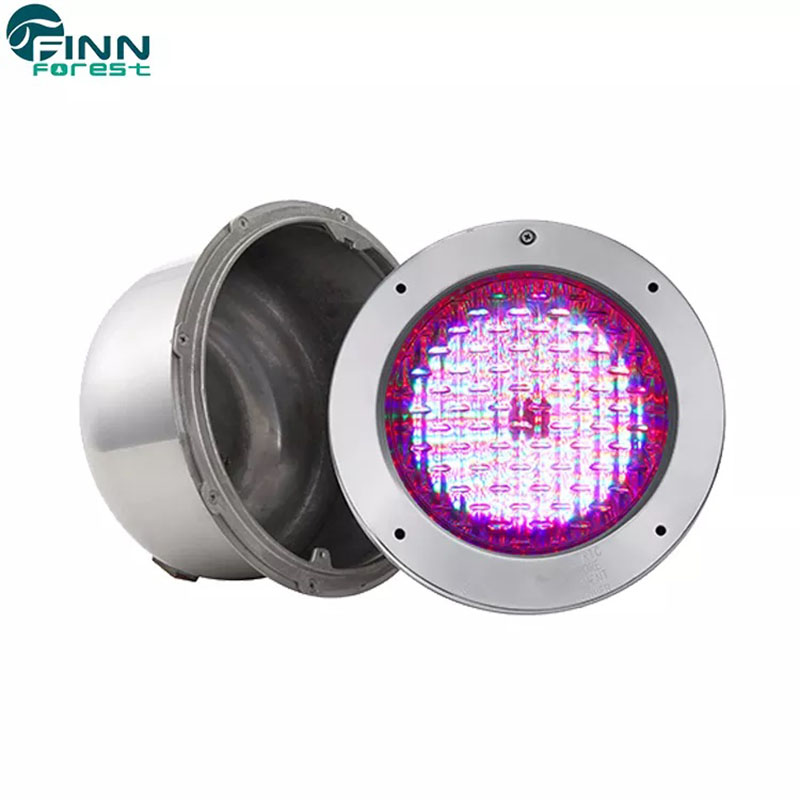
LED underwater lights are underwater lights made with LED technology. Compared with traditional underwater lights, LED underwater lights are more energy-saving and environmentally friendly, and the lights are varied and more decorative, so they are widely used in various landscape lighting systems.
LED swimming pool underwater lights are divided into wall-mounted and recessed
Let’s talk about the wall-mounted lights first. Fenlin’s LED swimming pool lights are more representative. There are two kinds of stainless steel shells and plastic shells. The combination of LED lamp beads realizes the color array in different modes. There are 8 fascinating pre-programmed modes to choose from. Fade in and out from continuous operation to fixed color, so that your family can enjoy different atmospheres. The specially designed lens forms a smooth outline on the pool wall, and the pool cleaner can also clean the pool under the light. Wall. Waterproof grade: IP-68

Attention should be paid to the installation of underwater lights:
1. First of all, for the selection of lamps, pay attention to the waterproofness of the lamps, the power supply voltage, and the power consumption of a single lamp;
2. Calculate the wire diameter of the cable: Generally, underwater lights use low-voltage safety voltage, which involves low-voltage and high-current power supply, which will affect the voltage drop of the line. The voltage drop at the end of each line must be calculated first, and the redundancy is reserved in advance. Remain;
3. The isolation transformer and leakage switch that supply power to underwater lights must be arranged outside the water area to avoid electric shock accidents;
4. Whether it is surface installation (wall-mounted underwater light) or installation (embedded underwater light), a 0.6-1 meter long cable should be reserved, so as to avoid the need to drain the water in the pool when there is a problem with the light in the future. In this way, even if the lamp is broken, the lamp can be lifted from the water to the water surface to replace the wiring and do waterproof treatment;
5. As for other wiring, the wiring joints are made waterproof, and general plumbers and decorators can basically handle it!
6. The LED underwater light should be powered by a DC constant current power supply. Under the control of a constant current power supply, the forward voltage drop of the underwater light will become smaller as the temperature of the LED chip increases, which does not have much impact on the LED underwater light. However, if it is a constant voltage drive, the chip current of the LED underwater light will continue to increase as the temperature rises. In severe cases, the LED underwater light may even be burned. Therefore, LED underwater lights should be powered by DC constant current power supply.
7. Anti-static measures need to be taken. Certain anti-static measures must be taken during the processing, production and installation of LED underwater lamp products, such as: the workbench must be grounded, workers must wear anti-static clothing, wear anti-static rings, and wear anti-static gloves. Install an anti-static ion fan, and at the same time ensure that the air humidity is about 65% during installation, so as to avoid static electricity caused by too dry air. In addition, LEDs of different quality grades have different antistatic capabilities, and LED underwater lights with higher quality grades have stronger antistatic capabilities.
8. Pay attention to the sealing of LED products. No matter what kind of LED lighting products, as long as they are used outdoors, they will face the problem of moisture-proof and sealing, especially for LED underwater lights. If the sealing problem is not handled well, it will directly affect the service life of the LED underwater light product.



















